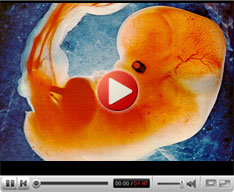Know Infertitlity
Infertility treatments
Diagnosing Infertility
Male:
Female:
Obstetrics and Gynaecology
Infertility Treatment Services
Andrology
|
Sperm function tests
Sperm function tests are an important part of infertility investigation and are used to identify the capacity of the sperm to successfully reach the egg and fertilize it in order to achieve pregnancy. It comprises of a number of tests to evaluate various aspects of the sperm's functions such as the following:
- Acrosome Reaction Assay: Sperm must be stimulated to release the acrosome releasing enzymes that in turn helps the sperm to digest its way through the zona pellucida that surrounds the egg. Sperms that react very soon or those which do not react at all will be unable to fertilize the egg.
- Hyperactivation Assay: Sperm must move in a whiplash pattern in order to make its way through the zona pellucida and into the egg. If the results of either the acrosome reaction assay or hyperactivation assay turn out to be poor, it indicates the inability of the sperm to fertilize an egg, in which case techniques such as ICSI may be the best possible option.
- Hypo-osmotic swelling (HOS) test: It is a simple test which is based on the semi-permeable aspect of the sperm cell. A normal and active sperm cell will swell when placed in a hypo-osmotic solution and this test provides useful data regarding the behavior and integrity of the sperm tail's cell membrane.
- Zona-free hamster oocyte test: This test is extremely popular and is performed to evaluate advanced sperm function. Since a hamster oocyte is very similar to that of a human egg, human sperm is allowed to fuse with zona free hamster oocyte in order to determine the fertile ability of the sperm that is necessary to achieve a successful pregnancy.
- Reactive oxygen species and male infertility: Reactive oxygen species (ROS) are formed in the sperm as a result of metabolism of oxygen and it includes various oxygen species such as hydrogen peroxide, superoxide anion and nitric oxide. Accumulation of high quantities of ROS along with excess concentration of certain enzymes in the sperm is a clear indication that the sperm is either damaged, immature or abnormal. ROS damages the sperm by causing oxidative damage to various components of the sperm. Although optimum levels of anti-oxidant systems are present in the sperm cell to protect it, abnormally high levels of ROS can break the cell's defenses and cause considerable damage. Chemiluminescent testing is carried out to identify high levels of reactive oxygen species.
- Zona pellucida binding tests: An acrosome reaction occurs when a normal sperm binds to the zona pellucida of a healthy egg, which causes the release of certain components which bring about the fertilization process. The zona pellucida binding test involved the duplication of this process in the lab to compare the functional binding capacity of sperms of the man who is being tested with that of a normal, healthy sperm.
- Antisperm antibodies test: An antisperm antibody test is done to detect the presence of specific antibodies that are capable of damaging a man's sperm that is present in the blood or semen. This test involves the addition of a substance that binds only to affected sperm in a sperm sample. Semen has the capacity of generating an immune response in a man or woman's body and the antibodies released in response to the reaction can damage and kill the sperm. An abnormally high concentration of these sperm antibodies in a man can make it hard for the sperm to fertilize the egg resulting in pregnancy failures.
|
Our Team
News & Events
Clinic Location
Video Gallery
|
















